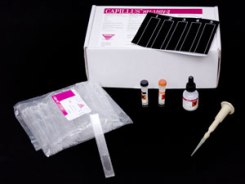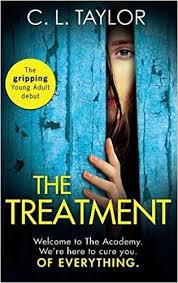DISCLAIMER: Caudwell LymeCo charity shares public domain information, which it believes to be reliable, in good faith. It should never replace the advice of a qualified physician with a license to practise medicine. If you believe any information on this website to be incorrect, you are invited to contact the charity using the Contact page.
This post is the first of a forthcoming series intended to help explain various aspects of the Draft NICE Guideline for Lyme disease to patients. It explains what the Draft Guideline says and means but it does not offer any opinions or discussion, medical or otherwise.
A larger number of posts will be published on this website after the final version of the NICE Guideline is released in April 2018. At that time, this and other posts may be modified to reflect changes made to the Draft Guideline.
This blog post is an explanation of a document published as guidance for medical professionals. It does not have any authority over decisions made by your doctor.
Do the Draft NICE Guidelines acknowledge chronic Lyme disease?The short answer to this question is YES, although the Draft NICE Guideline does not use that particular term.
The Draft NICE guidelines do acknowledge that long-term Lyme disease symptoms and infection can exist.
Instead of “chronic Lyme disease”, the guideline uses the term “persisting symptoms”.

The Draft Guideline deliberately avoids the term “chronic Lyme disease” because there is no accepted or standard medical definition of “chronic Lyme”. Different research papers use their own definition, and they also use many other unclear terms.
As the Draft Guideline states:
“The terminology around Lyme disease is varied and many poorly defined terms are used in the literature (such as acute Lyme disease, late Lyme disease, chronic Lyme disease and post-Lyme disease). This guideline has avoided using controversial definitions and has concentrated on providing evidence-based advice on diagnosis and treatment, according to the clinical context, presentation, symptoms and available treatments.”What does anyone mean by “Chronic Lyme”?
Does chronic Lyme mean persistent infection after standard treatment? Does it mean symptoms which remain after the infection has gone?
The standard medical definition of “chronic” is lasting more than 3 months. So, does it mean Lyme disease that has remained undiagnosed and untreated for over 3 months? Or does it mean any symptoms caused by Lyme disease, that have lasted more than 3 months after standard treatment?
We do not have the practical means to diagnose which category each individual patient would be in, never mind agreement on which category, or categories, “chronic Lyme” refers to.
What does the Draft guideline recommend for people with ongoing symptoms after Lyme disease treatment?The Draft NICE guidelines acknowledge that Lyme disease infection may persist after standard treatment. They also acknowledge that we have no research evidence on how to cure such cases.
The Draft Guideline says:
Explain to people with persisting symptoms following antibiotic treatment that:
-
symptoms of Lyme disease may take months to resolve even after treatment
-
continuing symptoms does not necessarily mean they still have an active infection
-
symptoms may be a consequence of damage from infection
-
there may be an alternative diagnosis.
The decision can be difficult with Lyme disease patients.
Lyme disease is a complex illness. Symptoms often take time to clear up even after the infection has gone, meaning it is difficult to judge whether the infection really is still present or not.
If a doctor sees signs of active infection – things like swollen glands, fevers, night sweats – these might suggest there may be an infection present. Though, of course, there may be an autoimmune disease or other immune system damage instead, that was triggered by the Lyme disease or came on coincidentally at a similar time.
Therefore even this is not clear-cut evidence.



If the doctor believes infection may still be present, trying more courses of antibiotics than the standard two courses seems a logical thing to experiment with. This is what doctors do with most other infections which do not clear up after the initial course of antibiotics.
This is why the Draft NICE guidelines for Lyme disease do allow that to happen – however, not just based on the decision of a GP, but under the care of a consultant as well. The decision to prescribe a treatment that is not scientifically proven to work should be undertaken after careful deliberation.
Isn’t there a test?“Do not routinely offer further antibiotics if a person has persisting symptoms following courses of antibiotics. Consider discussion with or referral to a specialist.”
A direct detection test like PCR would be an ideal way to establish whether active infection is still present, but the current PCR technology for Lyme disease only finds the spirochetes in a small proportion of patients and would produce a false negative for the majority of them.
The National Reference Laboratory (RIPL) does so this test occasionally, though, in unusual cases in which the doctor thinks it could be useful.
What does it mean if there is no infection?Although there is no practicable way currently to establish this, once a doctor has concluded persistent infection seems unlikely, he or she should monitor the patient while waiting for tissue healing to continue.
Some injured tissue may heal over months or years, whilst some damage may be permanent. Injured nerves can take years to heal, and sometimes never do. Damaged joints will be very unlikely to heal and will in fact continue to deteriorate due to normal wear and tear – as they do in everyone during their lifespan – even after the infection has been cleared.
The doctor should offer treatments to help deal with symptoms should they remain a problem.
The Draft Guideline also says that doctors should help patients to apply for disability and other allowances and help at home, if they are left unable to function or work as a result of having caught Lyme disease.
Advertisements Share this:




